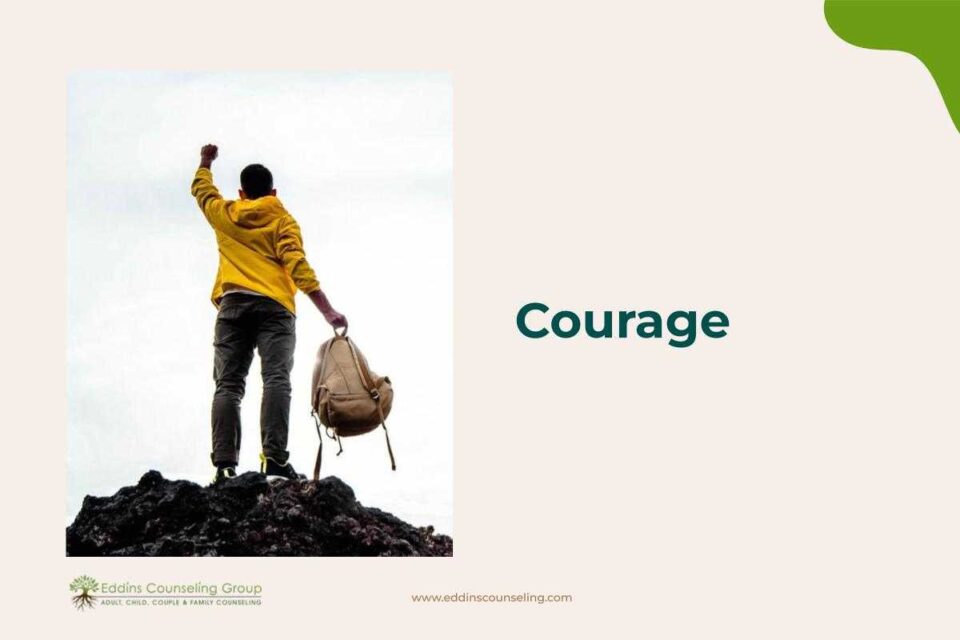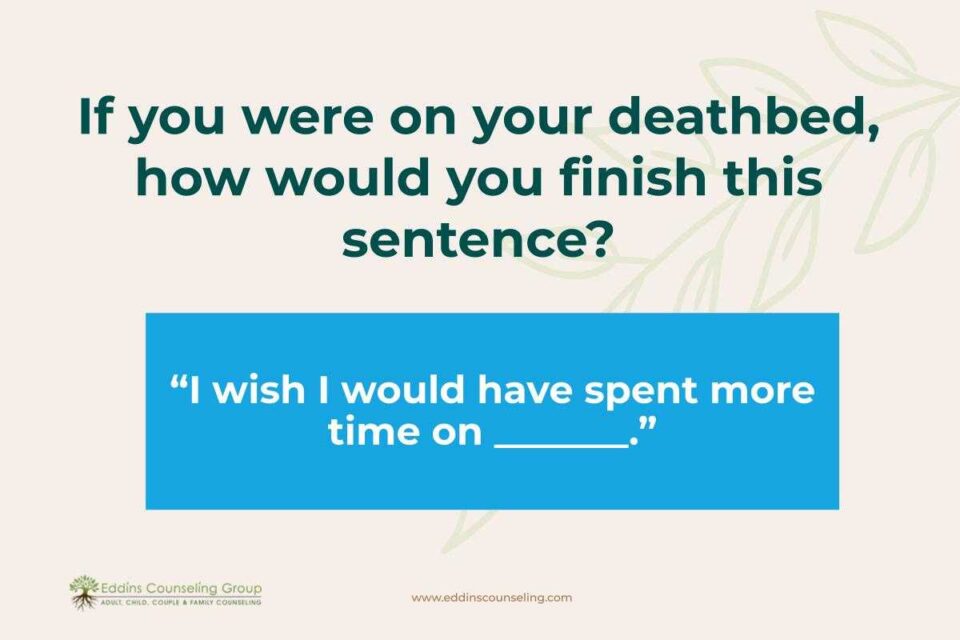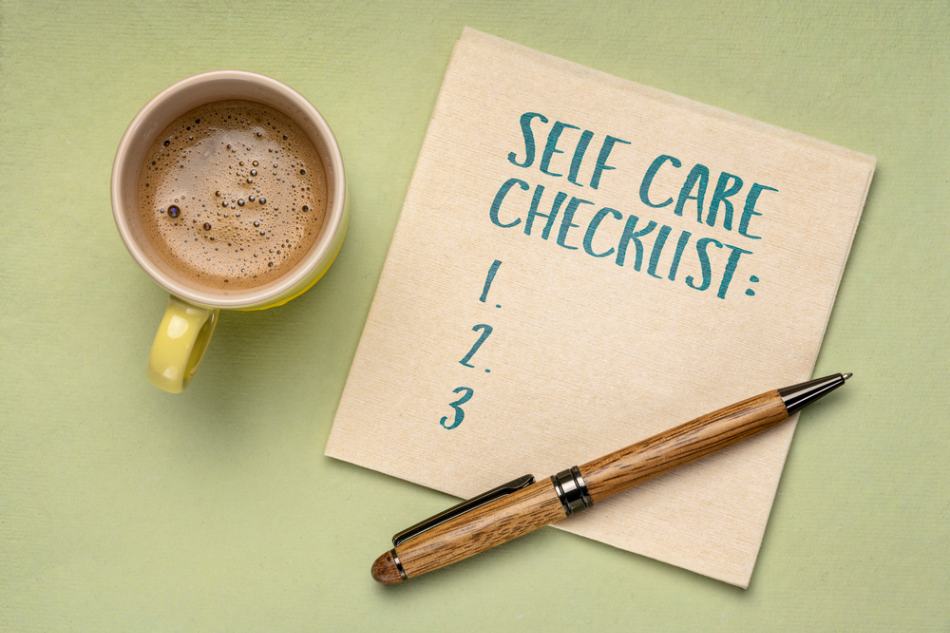December 10, 2020
Webinar: Strength-Based Strategies to Improve Interpersonal Relationships
Written by Rachel Eddins
Posted in Relationships, Couples, Marriage, Self Help / Personal Development, Webinars and with tags: Relationships, self-esteem
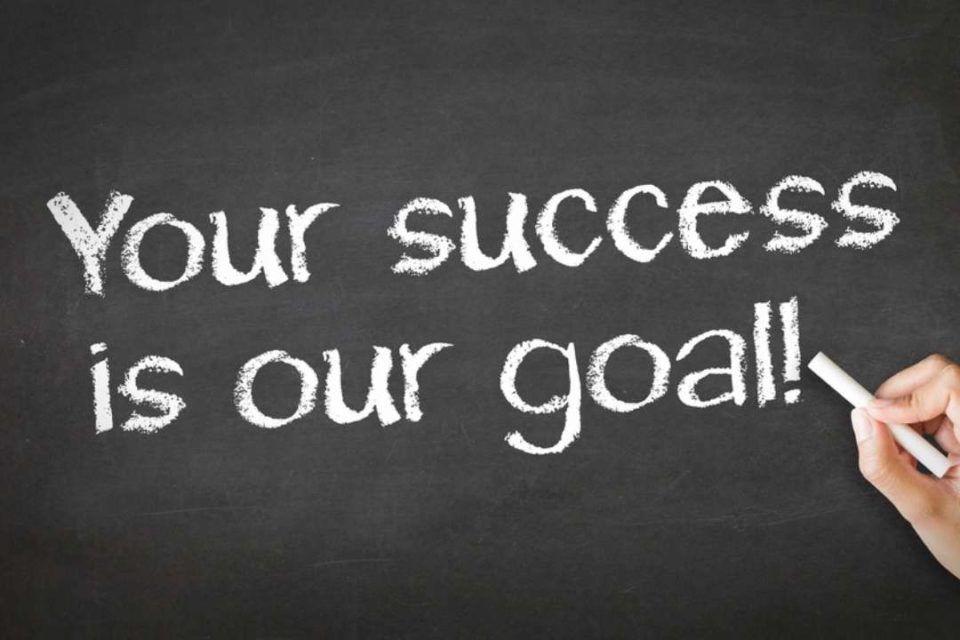
You’re stronger than you know.
Grounded in positivity psychology research and practice, learn to identify your signature strength(s) and infuse it in your life to improve your interpersonal relationships.
Facilitated by AP Vo.
Watch a replay of the presentation here.
Learn more about our Relationship Counseling Services.
Here is a transcript of the webinar:
Hello and thank you for joining us tonight! Today I will be presenting on the topic of strength-based strategies to improve interpersonal relationships.
Every month, Eddins Counseling Group focuses on web series. So I am happy to talk about positive psychology and just wanted to let you know that for the January series, that will occur on January 7th, the topic will be “Tools to Strengthen Parent-Child Relationships”. It will be facilitated by Sarah Agarwal.
Just a little bit about myself. I am AP Vo. I work with individuals and couples and I also do mediation. I am one of 24 therapists at Eddins Counseling Group.
Every day I feel very grateful to be able to do what I do because how often is it that you just get to sit and have people who come in (who are just so open, brave, and vulnerable), just share everything about their lives and the opportunity to sit and just help my clients to facilitate the process and work with them on their journey.
I’m happy that I am having the opportunity to sit here and spend some time with you all.

Meditation
So to start, I would like for us to be able to just have a little meditation and just start the evening by looking at this baby. It is so cute and has this great smile that you can’t help but just want to smile when you look at the baby.
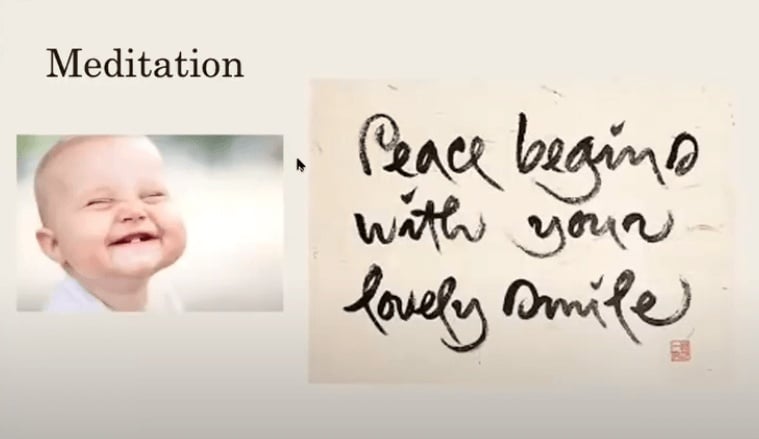
Also a quote, this is a calligraphy done by (inaudible) and it says: “Peace begins with your lovely smile.”
Essentially, our meditation will be a smiling meditation. So if you could, just close your eyes, or just lower your gaze, or keep your eyes open, it’s entirely up to you, and just breathe.
Breathe in, deeply, and breathe out and just smile.
The fact that we’re here together, that we’re breathing.
- Breathe in peace, breathe out anxiety.
- Breathe in happiness, breathe out sadness.
- Breathe in hope, breathe out despair.
Just breathe. Notice your breath, and if your mind starts to wander, it’s okay. Just go back to your breath. And just breathe and smile. Just breathe a few more times whenever you’re ready- open your eyes.
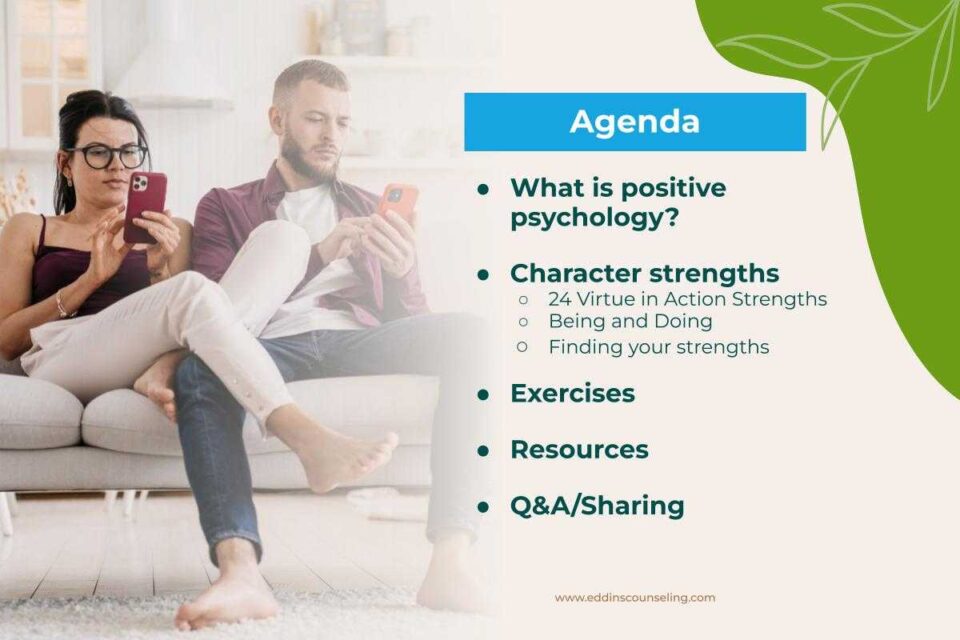
Agenda
- What is positive psychology?
- Character strengths
- 24 Virtue in Action Strengths
- Being and Doing
- Finding your strengths
- Exercises
- Resources
- Q&A/Sharing
Today, we’ll start with what’s positive psychology and then I will go into character strengths and then I’ll share with you some of the exercises. Some of them I share with my clients and then some of them are new exercises. After that, I’ll be sharing resources and then we’ll have a Q&A.
For the Q&A portion, I’ll try to answer as best as I could. And if I don’t have an answer, I’ll be sure to find them and send them to you afterward. In the end, we will be sending out a feedback form. I hope that you’ll take a little time to fill it out so that I can hear from you and see how I can improve.
Positive Psychology
If you hear positive psychology, what comes to mind? So according to the experts from the University of Pennsylvania Positive Psychology Center, it’s “The scientific study of strengths that enable individuals and communities to thrive.”
Then, they further define it, that it’s ”The field that is founded on the belief that people want to lead meaningful and fulfilling lives to cultivate what is best within themselves and to enhance their experiences of love, work, and play.”
I found this quote by Abraham Maslow: “If you plan on being anything less than you are capable of being, you will probably be unhappy all the days of your life”.
I think this quote is so fitting with what we are talking about because when we talk about positive psychology and our strengths and cultivating what’s best internally within us and parlaying our inner strengths and putting it into action is that we have a lot of goodness in us. And it’s also about congruence, too.
So essentially, I hope that this talk will provide a brief and allow you to see more of the strengths that are inside you. I am sure that you’re already utilizing your strengths. At the same time. I hope that this might help enhance those strengths so that you can bring out more of who you are. Be who you truly are and be happy for all of your days of our days.

Character Strengths – 24 VIA Strengths
- 6 Virtues – analysis of character in the past 2,500+ years in various disciplines including philosophy, virtue ethics, moral education, psychology, and theology. Found universally across cultures, religions, and beliefs.
- 24 Character Strengths – pathways to 6 virtues. Mansions of a well-lived life. (Martin Seligman.)
The VIA Institute on Character worked for a long time and they did an analysis of character in the past 2,500+ years in so many different disciplines, including philosophy, ethics, moral education, psychology, and theology.
They found that there are 6 virtues that are universal across all cultures, religions, and beliefs. And from the 6 virtues, there are 24 character strengths and they are pathways to these virtues.
And Martin Seligman, the father of positive psychology, says that these character strengths are the mansions of a well-lived life.
I will go over the 6 virtues and the 24 character strengths.
The six virtues are:
- Wisdom
- Courage
- Humanity
- Justice
- Temperance
- Transcendence

Wisdom
So under wisdom, the first virtue is creativity and is a sense of originality, adaptiveness, and ingenuity. It makes me think of the creators, the folks in the artistic fields.
With curiosity, there is interest, novelty-seeking, exploration, and openness. When I think about curiosity, I really think about little kids. They’re just so curious about everything.
Then there’s judgment and that’s critical thinking, thinking things through, and open-mindedness.
Then there’s the love of learning. That’s one of my character strengths. This includes mastering new skills and topics and systematically adding to knowledge. And as I see all of you, I am thinking this is the embodiment of the love of learning.
And then there’s perspective and that’s wisdom, providing wise counsel, and taking in the big picture. When I think about perspective, I think of someone who people come to and ask for counsel and who would share their wisdom.
Courage
The next virtue is courage, and under that is bravery which includes valor, not shrinking from fear, and speaking up for what’s right.
Then there’s perseverance and that’s persistence, industry, and finishing what one starts.
Then there’s honesty, and that includes authenticity and integrity. Just speaking up for what you think is right.
Lastly, undercards, that’s zest. In zest, there’s vitality, enthusiasm, vigor, energy and just feeling alive.
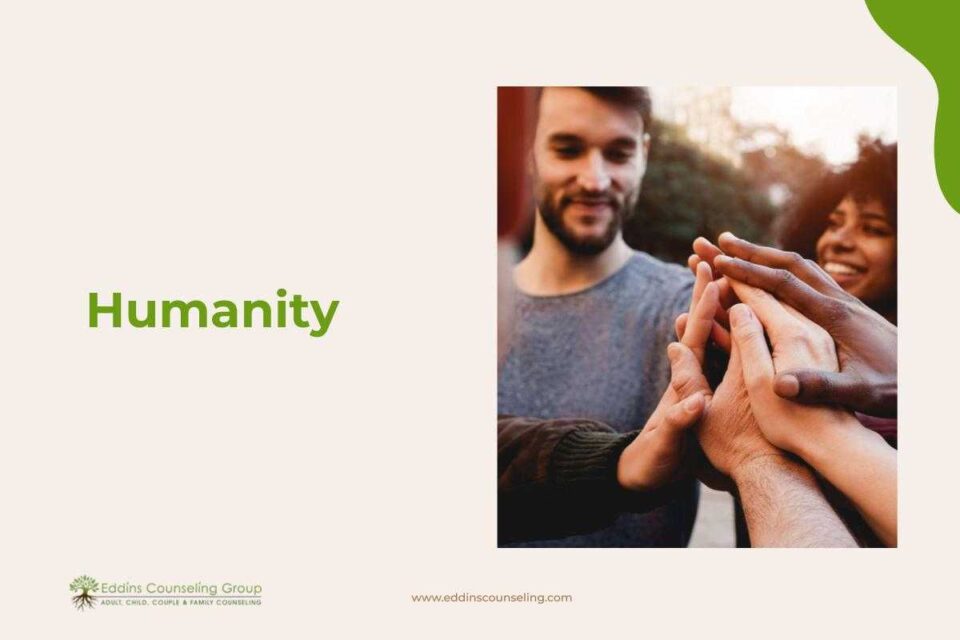
Humanity
The third virtue is humanity. The first thing is love and that’s both loving and being loved. I see a lot of that when I work with couples. It doesn’t matter if they come in for premarital counseling or if they are struggling with an issue. I see the commitment and I see that they both have each other and it’s just a warm space to be in. Then there’s also value in close relations with others.
Then there’s kindness which includes generosity, nurturance, care and compassion, altruism, and “niceness”. When I think of kindness, I think about a quote from the Dalai Lama who says “Kindness is my religion”.
Lastly, it’s social intelligence. That’s EQ, that’s awareness of motives and feelings of yourself and others and knowing what makes other people take.

Justice
Under the virtue of justice, there’s teamwork, and that includes citizenship, social responsibility, and loyalty.
Then there’s fairness. This is being just and not letting feelings bias your decisions.
Then there’s leadership and that could include organizing group activities or encouraging a group to get things done.

Temperance
The next virtue is temperance and that includes forgiveness. Forgiveness is a very, very hard thing to do, in my opinion, and I think there’s such an art and it does serve us well when we have the capacity and the ability to do that. So under forgiveness, that includes mercy, accepting others’ shortcomings, and giving people a second chance.
Then there’s humility and that’s modesty in letting one’s accomplishments speak for themselves.
Then there’s prudence and that’s being careful, being conscious, and not taking undue risks.
Lastly, there’s self-regulation and that’s having self-control, being disciplined, and having the ability to manage our impulses and emotions. I think that this character strength is very important, especially when we’re living with so much uncertainty, so having the ability to self-regulate, and manage anxieties and things like that is very, very important.
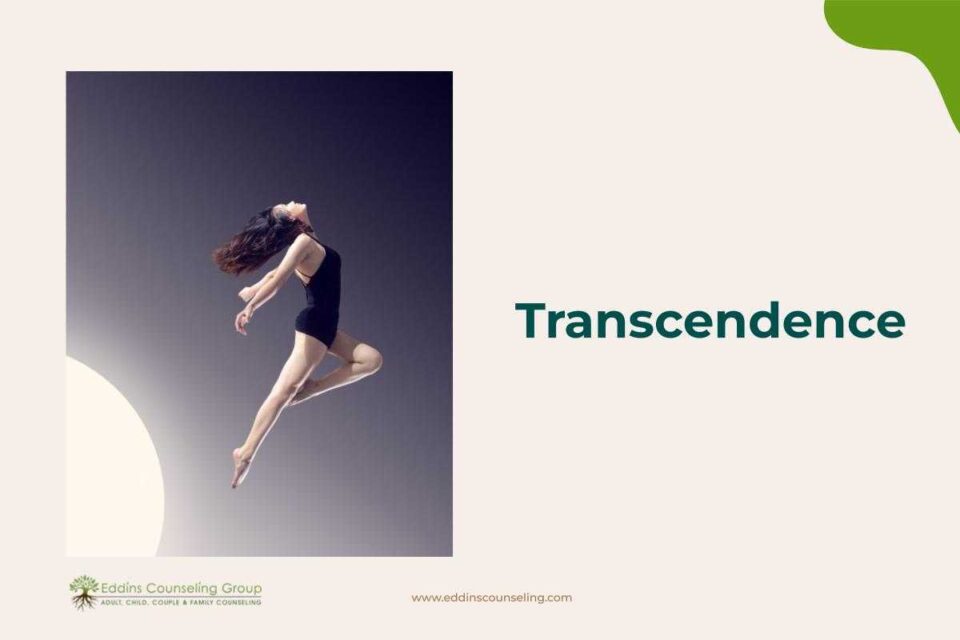
Transcendence
The last virtue is transcendence. The first item is the appreciation of beauty and excellence. That’s just having awe and wonder and elevation and just appreciating nature and just appreciating everything that’s around us.
Then there’s gratitude that’s being thankful for our life, and what we have, expressing our things, and then just feeling blessed, and counting our blessings.
Under hope, there’s optimism, future-mindedness, and future orientation. Again, I feel that in this time, having hope is just so important. It is mandatory.
And then there’s humor. That’s playfulness, bringing smiles to others, and being lighthearted. Humor is just so important, especially with couples, it’s such a great way to make repair attempts. And it usually works.
Then lastly, spirituality is just having faith, purpose, a sense of meaning, and religiousness. Those are the character strengths.
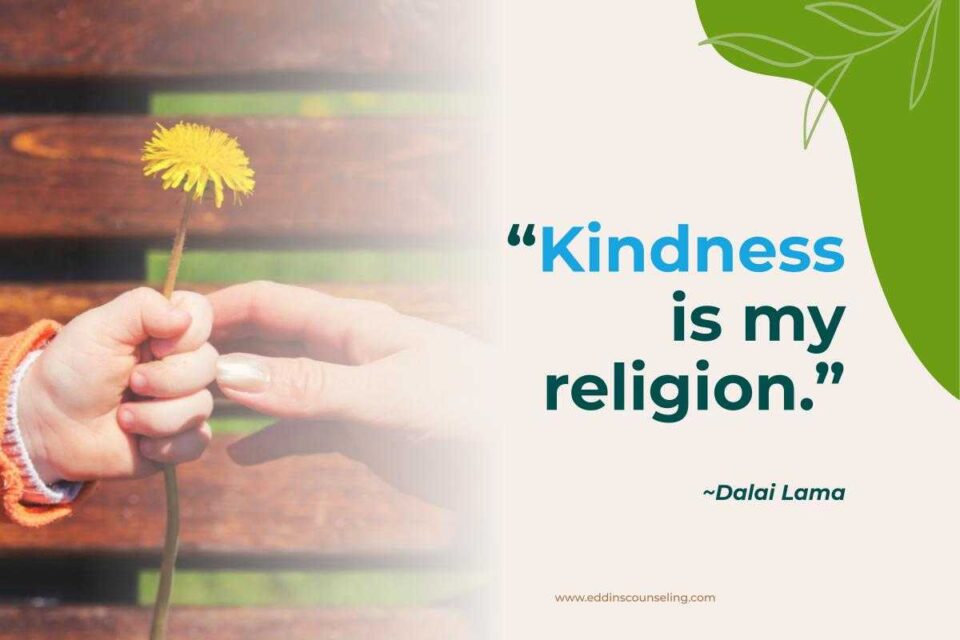
Character Strength – Being and Doing
- Benefits of using character strengths: PERMA
- Positive emotions
- Engagement
- Positive Relationships
- Meaning
- Accomplishment
- Practice
- Ben Franklin worked on improving one virtue per week
- Habit creation
- Cue
- Routine
- Reward
With character strengths, there is being, and then there is doing.
The being part: They are our identity and understanding of who we are and allow us to be ourselves.
The doing part: Is having the ability to use our strengths to express ourselves, take action, do good, and show our values in action.
The benefits of using character strengths are called PERMA. It stands for just having:
- positive emotions or increasing our positive emotions,
- having more engagement in life and in work,
- creating more positive relationships,
- having meaning. This means meaning in life, meaning for what we do, and meaning for the world in a sense of what is going on between us and around us.
- And a sense of accomplishment, doing what we do, having the perseverance to carry on and do what we set out to do, and just celebrating our successes and the successes of the people in our lives.
So when it comes to practice in the autobiography of Ben Franklin, what he does is he worked on improving one virtue per week. That allows him to be able to do something well and then carry on doing something.
Practicing and doing something frequently would help us to create a habit.
One of the tips for habit creation is having a cue. And then with the cue, then we start doing something and that’s the routine.
And then after doing something, then we reward ourselves for a job well done, which would motivate us to want to do the thing again.
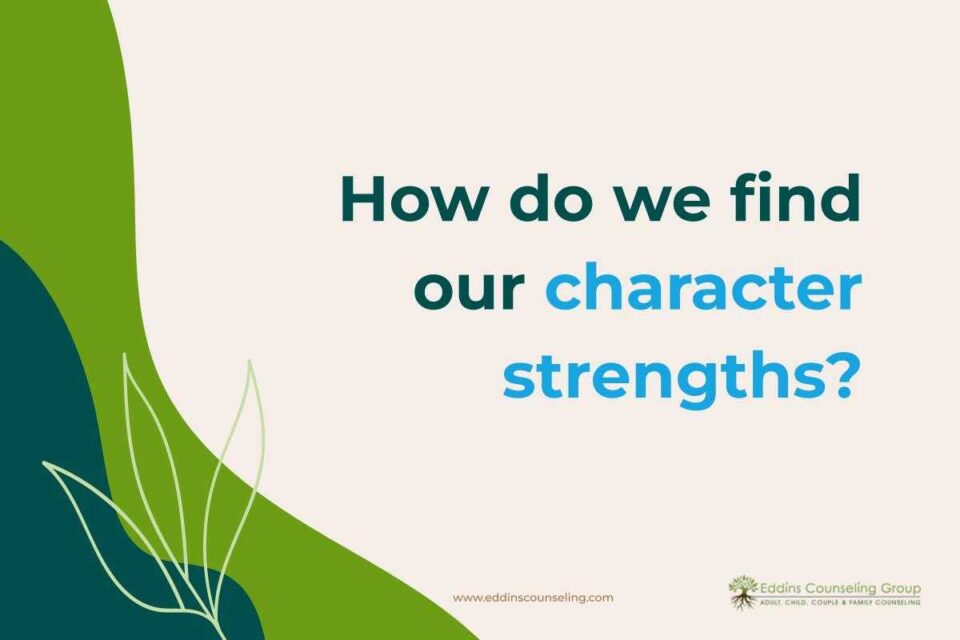
Character Strengths: Finding Your Strengths
With character strengths, how do we find our strengths? I wonder, what do you identify with as you heard what I said and reflect on yourself and your own experience? What strengths resonated with you? And then another way is also to look for strengths behaviors.
“Little” Strengths
I’m going to share with you some of the examples of “little” strengths use just to show what little things that we do or others do that embody a strength:
- Creativity – thinking up a new story to tell your child.
- Curiosity – asking a neighbor some questions about their life.
- Judgment and critical thinking – reading two very different columns to get a point of view.
- Love of learning – reading three online articles about the same topic.
- Perspective – offering a one-liner of advice to a clerk who is having a bad day.
- Bravery – driving downtown when you’re afraid of heavy traffic.
- Perseverance – deciding to respond to 10 emails in a row to complete that task.
- Honesty – admitting a mistake.
- Zest – taking a minute walk on a cold day.
- Love – listening to someone who is having a rough day.
- Kindness – holding an elevator for someone.
- Social intelligence – asking a family member how they are feeling when they show distress, and facial expression
- Teamwork – ask a team member for feedback.
- Fairness – when giving candy to children in the neighborhood, make sure every child gets the same quantity.
- Leadership – organizing a gathering of friends for lunch.
- Forgiveness – letting go of tension created when someone cuts you off.
- Humility – holding off on sharing positive news so the other person can actually share their own story.
- Prudence – planning a quick breakfast or two.
- Self-regulation – brushing and flossing one’s teeth in the morning or in the evening.
- Appreciation of beauty and excellence – marveling at the skill and grace of an Olympic downhill skier.
- Gratitude – offering a personal thanks to the universe that we get to wake up in the morning.
- Hope – feeling optimistic about an upcoming work meeting.
- Humor – smiling to a stranger on public transportation or on the street, although it is hard right now with our masks. So maybe giving them a nod.
- Spirituality – fueling a sense of meaning during mindfulness practice.
These are the exercises from a book called “Character Strengths Interventions: A Field Guide for Practitioners” by Ryan M. Niemiec.

The VIA Character Strengths Survey
Lastly, another way is to take The VIA Character Strengths Survey. This is found on the VIA Institute on Character website, and it’s a pre-survey. About five million people have taken the survey already. So there’s a survey for adults and then there’s a survey for youth (ages 10 to 17).
There will be questions to take and then once you enter your information and you fill out the survey, then you’ll get the results back. They have a lot of great resources on this page.
Exercises
- Grateful journal
- Meaning making: “I wish I would have spent more time…..”
- Positive relationships
- The 4 mantras
- Perspective taking
- Mindful listening and speaking
- Ritual of appreciation
- Compliment review
- Sincere apology
- Love letter
The exercises are my favorite part.
One of the exercises that I find incredibly helpful is to boost our level of happiness because I have to confess that as I was doing this consecutively, I do feel better and happier, and also allows us the opportunity just to sit and revisit our day.
Just to see what is good that has happened to us and an opportunity to feel the zest or the joy or the appreciation again, so it’s almost like doubling the effect of the goodness.
Exercise: Grateful Journal
The grateful journal is just simply getting a journal or notebook. In the evening write down three things that you’re grateful for in the day. Then think about what is the feeling that’s associated with it. So it could very well be: “I woke up this morning and I saw the sun shining through the window. It makes me happy and refreshed and ready for the day”.
Another thing with having a grateful journal for children is the magic rock exercise. I think I read it somewhere where there was a man whose child was sick and he picked up a magic rock and he started making wishes and his child got treatments and was well. So then he started selling these magic rocks to people.
What I do is I give the rocks to my nieces and nephews and it’s just so wonderful to see my little niece in the evening holding a rock and literally talking about the things that she’s grateful for in the day. And it’s just amazing what kids come up with.
At the end of telling everyone who’s there that she’s grateful for, she says: “Thank you, thank you, thank you”. And literally for me, that is such a joy to be able to sit there and see her recounting her blessings and being grateful.
Exercise: Meaning Making
The next exercise is Meaning Making. This can be a bit morbid because we actually pretend that we’re on our deathbeds, and we think about our life, and we reflect on our life. What we’re going to write is: “I wish I would have spent more time on…(whatever it is that we’re thinking of).”
As you write, this sentence reflects on your strengths. What are the character strengths that would help you to accomplish the thing that you have written?
Positive Relationship Exercises
The following are some of the positive relationship exercises that enhance our interpersonal relationships.
Exercise: The 4 Mantras
I would like to start first with the 4 Mantras. This is a video by Zen Master Thich Nhat Hanh.
1) Darling, I’m here for you
“The first mantra is “Darling, I’m here for you”. When you love someone, the best thing you can offer is your presence. How can you love if you are not there?
And you look into his eyes and you say: “Darling, you know something, I’m here for you”.
You offer him or her presence and your true presence. You are not preoccupied with the past or the future. You are here for your beloved one.
2) Darling, I know you are there
The second one is “Darling, I know you are there” and I am so happy because you have told me that you recognize the presence of your loved one as something very precious. And you use your mindfulness to recognize that and embrace your beloved one with mindfulness. And she will bloom like a flower. To be loved and to be recognized as existing.
These two mantras can bring happiness right away even if your beloved one is not there. You can use your telephone and practice the mantra.
3) Darling, I know you suffer
The third mantra is what you practice when your beloved one suffers. “Darling, I know you suffer”. That is why I am here for you.
Before you do something to help her/him, your presence already can bring some relief and acknowledgment of the knowledge of the suffering of the hurting.
4) Darling, I suffer
The fourth mantra is a little bit more difficult. That is when you suffer. And you believe that your suffering has been caused by your beloved one, so you suffer so deeply that you prefer to go to your room and close the door and suffer alone.
You get hurt and you want to punish him/her for having made you suffer. And the mantra is to overcome that. The mantra is: “Darling, I suffer. I’m trying my best to practice. Please help me.” You go to him/her and practice that. If you can bring yourself to say that mantra, you suffer less right away.”

That was the 4 Mantras, and I really, really love this video. I do watch it a lot and I do share it with my clients.
- The first mantra, that’s showing love. That’s the strength of love.
- The second mantra is letting your partner know that they’re there and you’re appreciating them, that’s showing gratitude.
- The third mantra is just love and kindness.
- And the fourth mantra to me, I see honesty, self-regulation, perspective, and bravery, too. It is hard to let someone know that you’re sad and especially when it’s them who makes you sad.
I hope that you would be able to use one of the mantras and just practice it on someone.
Exercise: Perspective Taking
The second exercise is perspective taking. This is the strength of perspective and it is usually for whenever we’re engaged in a fight.
So if we’re taking in the perspective of a neutral third party, who wants the best for all, how would they view the conflict?
We can just view the conflict that we’ve had with someone from their perspective and write it down and share it with our partner and see which strengths can we use to undergo or use whenever we have a conflict.
Another way is with John Gottman and essentially it is to process a regrettable incident. So essentially, just talking about what happened and what tipped us off, what set us off, what was our contribution to the fight, and taking responsibility.
And then tell our partner what could be the one thing that we could do better the next time and then request them to do one thing differently so that the regrettable incident will not happen again. So that’s perspective taking.
Exercise: Mindful Listening and Speaking
The next exercise is mindful listening and speaking. I feel that there are a lot of therapists and relationship experts utilizing this method a lot. It’s literally stretching the time in the conversation.
What we do is usually speak and then the next person speaks so we go back and forth because it is a dialogue. So essentially we’re stretching the time. One person would be the speaker and the other person would be the listener.
When the speaker speaks, the listener will listen and pay attention to what the speaker is saying.
Being really curious to hear what they’re saying instead of trying to come up with a response. Just hear him or her out. This would also allow the speaker some space to share and it also allows us the time to give ourselves the space to intercede and notice what we’re feeling. And then after that, the speaker speaks.
We can try to understand better. We can reflect on what they said, summarize it, and ask them if that’s what they said and if we get it right. Then if we can validate part or everything that they said. If we were to put ourselves in their shoes, does it make sense? Can we understand what they’re saying? We don’t have to agree. We just get to validate them and their experience.
I think there’s no better gift to give to our partner than actually giving him or her the chance to feel heard and understood and have his or her feelings validated.
I think that alone allows the speaker the chance and the opportunity to be calmer and then switch roles, and the listener becomes the speaker. So that’s mindful listening and speaking.
Exercise: Ritual of Appreciation
The next exercise is ritual appreciation. This is something that I ask my clients to do a lot too. I would love to show you another video, and it is being done by these two incredible experts, Harville Hendrix and Helen Hunt. They write a lot of relationship books and they demonstrate this great ritual of appreciation.
It is a bit long, but I think it’s really, really clear. And they’re also demonstrating Imago dialogue (mindful speaking and listening). That’s part of what I mentioned earlier, mindful speaking and listening. Literally, just being really curious and hearing what your partner has to say.
That was an appreciation exercise. This is likely longer and more details than what we usually do. I’m so glad, though, that it’s almost two exercises in one.
It is mindful listening and a ritual of appreciation.
The one thing that I remind my clients is as the person who is being appreciated, just take it in. Know that what you do matters.
The acts or the words or the item of clothing that you wear warm the heart of your beloved.
They can feel love and it’s a wonderful thing. And maybe you can just do more of that.
Exercise: Compliment Review
The next one is a compliment review. It’s helping boost the strength of appreciation and, at the same time, it’s very useful for those who have low confidence or self-esteem. This is because, oftentimes, it’s hard to hear someone thanking us or appreciating us because we don’t see that in ourselves.
So essentially, as your partner compliments you on something, just sit down and write: “What is it that my partner is admiring about me? What strengths did I use in the action that my partner is admiring?”
Doing this will help improve the relationship and boost our self-confidence because we get to see that it’s the strength that we have inside of us and the strength that we employ. It actually helps make our partner feel loved or appreciated or valued.
Exercise: Sincere Apology
The next one is offering a sincere apology.
The Art of Apologizing
Nine essential ingredients of a true apology:
- Does not include the word “but”
- Keeps the focus on your actions and not on the other person’s response
- Includes an offer of reparation or restitution that fits the situation
- Does not overdo
- Doesn’t get caught in who’s more to blame or who started it
- Requires that you do your best to avoid a repeat performance
- Should not serve to silence
- Shouldn’t be offered to make you feel better if it risks making the hurt party feel worse
- Does not ask the hurt party to do anything, not even to forgive
This is from the podcast between Brené Brown and Dr. Harriet Lerner, author of “Why won’t you apologize?”
Some of the essential ingredients of a true apology include just apologizing for your action and not including the “buts” because the word “but” almost invalidates or cancels out what’s being said earlier.
Also in the apology, offer reparation or restitution that fits the situation. This could essentially be if you spill wine on a white dress, then you could offer to get the dress clean or get another dress or something like that.
Do not overdo it and don’t get caught up on who’s more to blame or who started it. Number nine is: do not ask the hurt party to do anything, not even to forgive you. Essentially, apologizing is something we do for ourselves. It is an act of bravery to own up to something that we do.
One of the ingredients, too, is don’t get caught up and not expect them to do anything. That’s forgiving and apologizing. So the apology is for us and just do it with sincerity when we really want to do it.
Exercise: Love Letter
The last exercise is writing a love letter. Sometimes it’s hard to say things or sometimes it’s just so much that we just want to sit down and write some.
In this day and age, we are just so quick. We’re emailing or texting. So, it would be nice just to sit and use a pen or pencil or something and write on a piece of paper to let your partner know what you appreciate about them or what you love about them. And then sending that letter, whether giving it to them or mailing it, is really, really nice to receive a letter.
We could also use a love letter to write to someone that we have a conflict with. Sometimes it is hard to articulate our feelings and having the time to sit down and reflect and write could be helpful. It could promote peace and understanding as well.
So all in all, what I can say is with all love stories and the “lived happily ever after” stories, now the best part is you get to write the ending to your love story!
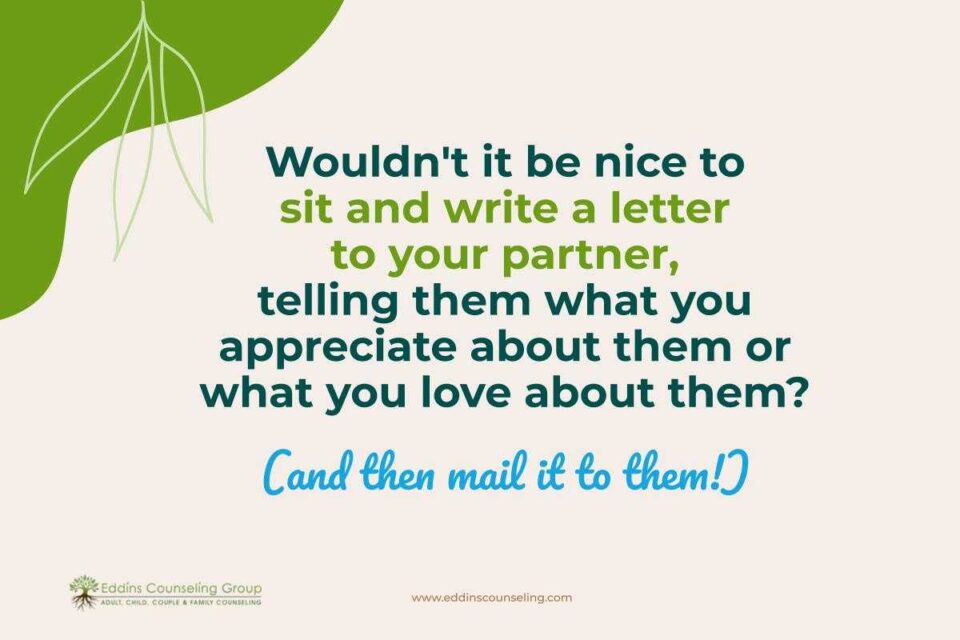
Resources
Here are some of the resources that I’d like to share with you all. And we’ll be sending out this PowerPoint presentation for you. I hope that it will be helpful.
So the Positive Psychology Center of Psychology, where Martin Seligman, is teaching. There are a lot of great resources there.
And then the VIA Institute on character, which has the 24 character strengths that I just went over. You can take the survey there. Then also under the survey, you also see the 5 love languages.
I share this with some of my clients and actually, a lot of my clients know about this already. I think that it’s such a great tool. It’s almost like this is the biggest clue, if you know what your partner’s love language is, use it, speak, do… because if you speak their love language, … If you love them a lot, but you speak your own language and it’s not their language, they won’t know it.
Then there’s an article Happy Together by Suzann Pileggi. She uses positive psychology in relationships. And then the full podcast “I’m sorry: How to apologize and why it matters”.
- Positive Psychology Center: https://ppc.sas.upenn.edu/
- VIA Institute on Character: https://www.viacharacter.org/
- Free weekly live strengths and mindfulness sessions: https://www.viacharacter.org/resources/activities
- Surveys
- VIA Character Strengths:
- https://www.viacharacter.org/survey/account/register?registerPageType=popup
- The 5 Love Languages: https://5lovelanguages.com/quizzes/love-language
- Article
- Podcast
- Brene Brown & Harriet Lerner on “I’m sorry: How to apologize and why it matters”
Recommended Videos
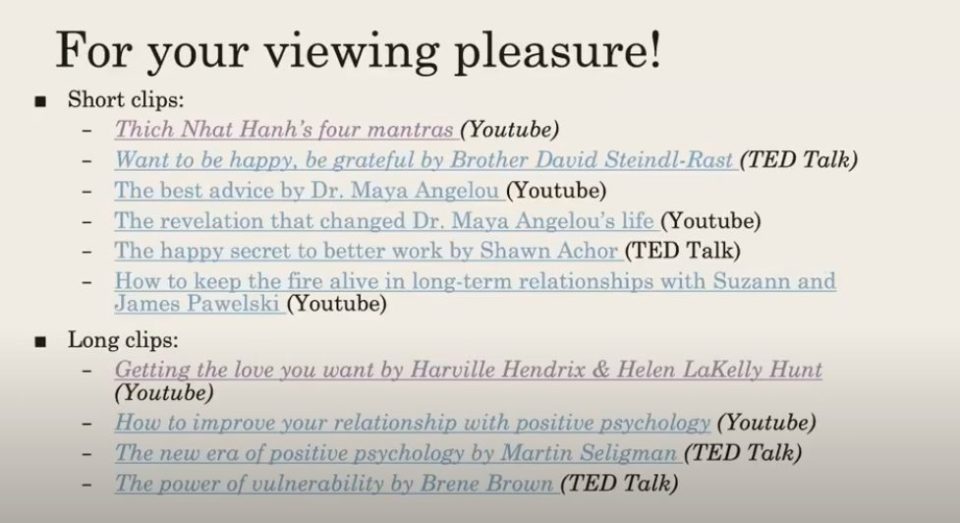
These are some of the quotes for your viewing pleasure. And then some other TED talks, too, that I find incredibly helpful.
Recommended Books
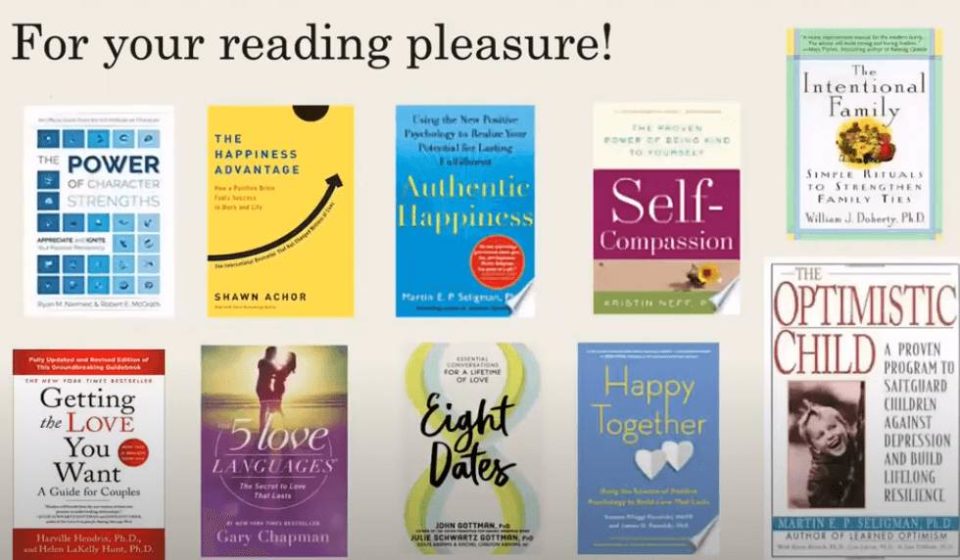
And these are some books I recommend. I love books and it’s nice when my clients ask for a book recommendation. These are some of the books that I think speak well on the topic of positive psychology, and that could be very helpful. I also included self-compassion because oftentimes we’re really, really tough on ourselves.
By embodying our strengths and doing good, expressing our love and our kindness and doing good for others, and also contributing to society, we often neglect ourselves. I think it’s important to focus on ourselves as well and giving our self self-compassion and self-love.
Then there’s this book that is not often known, “The Intentional Family”. The writer William Doherty speaks about the rituals that families or couples can have. It’s just really, really wonderful. Some of my clients have date nights that are just really, really sacred.
And that is a ritual or there are some people who have relationship check-ins, and that’s something that they do, or just having a one-on-one on a regular basis with their child. That’s something that everyone can look forward to.
Having or providing the sacred time or the sacred space for your loved one is a wonderful thing to do.
Then there’s the book “The Optimistic Child” by Martin E. P. Seligman. That’s a great book.
Workshops for Couples
- Hold Me Tight Workshop (Sue Johnson’s Emotionally Focused Therapy): https://iceeft.com/hold-me-tight-workshops/
- Imago Workshops (Harville Hendrix & Helen Hunt): https://harvilleandhelen.com/couples-workshops/
- The Art and Science of Love Workshops (John and Julie Gottman): https://www.gottman.com/couples/workshops/art-science-of-love/
There are three workshops for couples that are then I think are just so amazing to help strengthen relationships. Some of them are offered online and some of them are offered in person.
I don’t think the in-person sessions are happening anytime soon, but that’s something to look into. So one is “Hold Me Tight” by Sue Johnson. and then the Imago Workshops. Then “The Art and Science of Love” by John and Julie Gottman, who created the Love Lab in Seattle.
Sharing
I’d love to hear:
- What is your favorite signature strength?
- In being and doing what are some of the strings in action?
- What’s a favorite exercise that you do with either a friend, a family member, or a child?
I can’t thank you enough for giving me one hour of your time to allow me to share my space and share information about the character strings and share the exercises with you. You have been so utterly wonderful in being present. So I just want to acknowledge you for that.
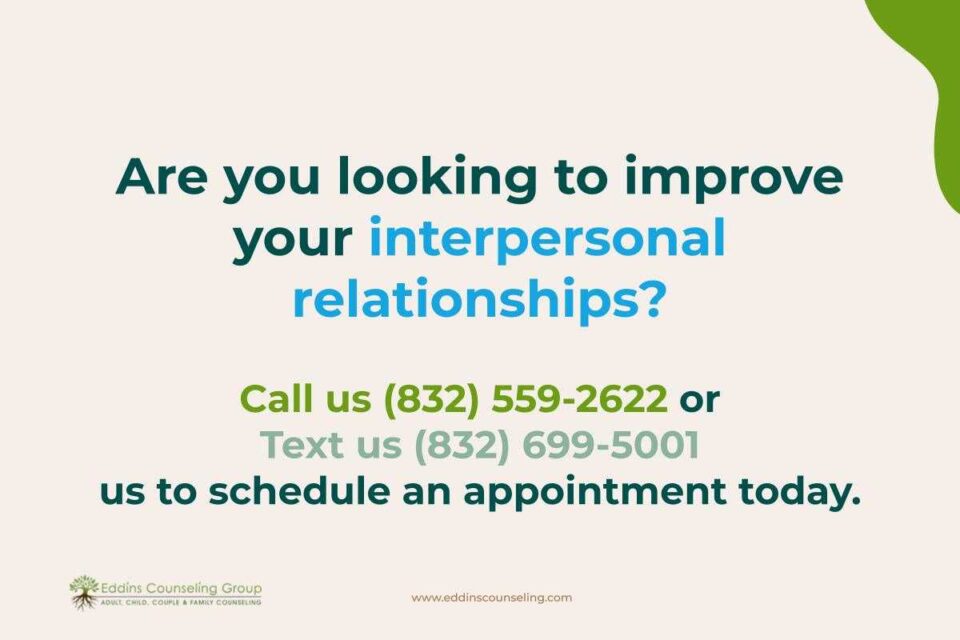
Contact Information
Phone: 832-559-2622 ext.505
Email: [email protected] or [email protected]
Here is my contact information. Please feel free to reach out. I would love to hear from you. So that is all. Thank you so much. Have a wonderful evening and have a great weekend. Bye.
Grounding & Self Soothing
Get instant access to your free ebook.

